Author: Laura Counts
Congrats to our Haas Olympians

Congratulations to our four Haas bears competing in the Tokyo Olympics. You make us proud!
Champion backstroker Ryan Murphy, BS 17, and his teammates captured gold in the men’s 4x100m medley relay on Sunday, breaking the 12-year-old world record for the event by half a second. It was the 4th gold medal for Murphy, who served as this year’s team captain for USA swimming. Murphy also won silver in the men’s 200m backstroke, and bronze in the men’s 100m backstroke.
Golfer Collin Morikawa, BS 19, narrowly missed the bronze medal (by one stroke) and came in 4th in the men’s golf tournament.
Rising senior Alicia Wilson, BS 22, came in 8th in the women’s 200m individual medley, swimming for Great Britain.
 Still to come: Johnny Hooper, BS 19, will compete in the men’s water polo quarterfinals tonight (Tuesday, Aug. 3), at 10pm PDT. See full finals schedule here.
Still to come: Johnny Hooper, BS 19, will compete in the men’s water polo quarterfinals tonight (Tuesday, Aug. 3), at 10pm PDT. See full finals schedule here.
Same Berkeley MBA without the commute: Berkeley Haas now offers flexible online option

Berkeley, Calif. — UC Berkeley’s Haas School of Business announced a new flexible online option for its top-ranked, part-time Evening & Weekend MBA Program. The new Flex option offers the same curriculum and faculty and the same Berkeley Haas MBA degree in a highly customized and flexible online and on-campus format.
Students enrolled in the Flex option will take their core MBA courses online. After completing their first three semesters of the core curriculum, students can take their elective courses either in person on the Berkeley Haas campus or online.
Applications for the Flex option will open on August 17 through the Evening & Weekend MBA Program (EWMBA). The first group of about 60 Flex students will enroll in July of 2022.
The Flex option will be part of the Berkeley Haas Evening & Weekend MBA Program, which is ranked #2 among part-time MBA programs by U.S. News. The program typically takes three years to complete, with some students completing their degree in just 2.5 years.
“Students in the Flex cohort can get a top-ranked Berkeley Haas MBA from anywhere, without the commute to campus every week,” said Dean Ann E. Harrison. “They will have flexibility in how they complete their MBA program. Yet they can also enjoy the in-person and campus experience, giving them the ability to access the extracurricular experiences Berkeley and Haas have to offer.”
The Flex option is designed for high-achieving and ambitious professionals with five or more years of professional work experience who seek additional skills to advance in their careers or to change jobs. They will join a network of 41,000 Haas alumni around the world.
In the Flex option, 40% to 60% of the online core courses will be delivered synchronously to create a robust, cohort-based learning experience. The significant percentage of synchronous content ensures that Flex students have the same opportunity for discussion and feedback as students in on-campus courses. Students will be assigned to study teams that are carefully selected for diverse skills and backgrounds, ensuring that students learn as much from each other as they do in the classroom.
Given the importance of community in our EWMBA program, the Flex option also includes five in-person events:
- WE Launch, the required orientation over a long weekend (Friday through Sunday) in late July on the Berkeley Haas campus.
- Leadership Communication, a required course taught on the Berkeley Haas campus as a weekend immersion (Friday through Sunday) in the second half of the second semester.
- RE Launch, an optional weekend immersion on the Berkeley Haas campus in October of the third semester.
- Business Communications in Diverse Environments, a required weekend immersion (Friday through Sunday), taught typically at a resort site in Napa Valley on the Martin Luther King Jr. holiday weekend in January of the fourth semester.
- WE Lead, an optional weekend celebration and reflection on the MBA experience held in May of the graduation year.
“In this fast-changing environment, our MBA experience provides professionals not only with a rigorous management education but also with an understanding of how innovation, inclusion, and sustainability will shape the future of business,” said Dean Harrison. “Our innovative courses will help prepare our students for what’s next, addressing a wide range of workplace challenges—from questioning the ethics of artificial intelligence to recognizing how unconscious bias impacts management decisions.”
In 2022, Haas will celebrate the 50th anniversary of its part-time MBA program. “We think the creation of this new Flex cohort reflects our commitment to innovation and UC Berkeley’s mission,” said Jamie Breen, Assistant Dean, MBA Programs for Working Professionals, who oversees the new Flex option.
As the second-oldest business school in the United States, Berkeley Haas has been questioning the status quo since its founding in 1898. It provides research, thought leadership, and talent development to lead the way to a more inclusive and sustainable future.
More at https://ewmba.haas.berkeley.edu/academics/flex
Media Contact:
Ute Frey, Executive Director of Communications
[email protected]
O: (510) 642-0342
M: (510) 301-9184
Stowsky and Goodson honored for ‘extraordinary teaching in extraordinary times’
Berkeley Haas Senior Assistant Dean for Instruction Jay Stowsky and Lecturer Peter Goodson have been recognized with UC Berkeley’s Extraordinary Teaching in Extraordinary Times award.
The award was created by the Academic Senate’s Committee on Teaching to honor faculty, staff, and student instructors who embraced the challenges posed by the COVID-19 pandemic and engaged in or supported excellent teaching.
“These instructors and staff used innovative methods and worked beyond their traditional roles to ensure that students remained engaged and supported, and were challenged to do meaningful work under extraordinary circumstances,” wrote the award committee.
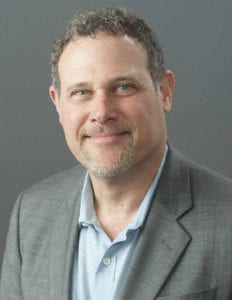
Stowsky has served as senior assistant dean for instruction for 14 years, and at Haas for 24 years. He played a critical role in overseeing the transition from live to remote classes.
“Working to match the engagement level of a live, physical classroom has involved hours of brainstorming, planning, workshop training, and investments in a host of new technologies,” wrote Stowsky, who is retiring at the end of the semester. “It has been fascinating, and challenging, to conceptualize, organize and operationalize this goal with the faculty, graduate student instructors, and technology teams at Haas.”
Remote learning innovations at Haas included the installation of four state-of-the-art virtual classrooms, technical upgrades to regular classrooms for virtual teaching, regularly scheduled faculty-student engagement sessions, improvements in production quality of digitized asynchronous content, a remote instruction workshop series for faculty, and tech training.
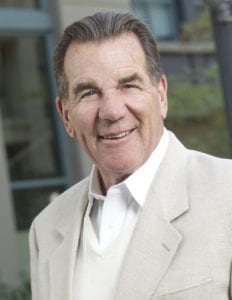
Goodson is a distinguished teaching fellow and continuing lecturer who has taught popular courses on mergers & acquisitions, private equity, and turnarounds to MBA students since 2004. After the pandemic forced all courses online, he invested “hundreds of hours repurposing content and delivery” to transform his courses.
“Our lofty goal was to deliver a ‘value proposition’ that was as good as or better than the in-person model,” he wrote of the experience. “Our team designed an online classroom experience that is optimized for student engagement; altered curricula to showcase students’ company’s pandemic strategies; published COVID MBA cases (including the first at Berkeley Haas); established rigorous and equitable inclusion; and created a feedback system to continuously improve the course.”
The result was courses where students were highly engaged and rated among the very best experiences they’d had with online learning.
Goodson and Stowsky are among 38 individuals and teams selected from 500 nominees for the award. See the full list of honorees.
Student-led StEP fills critical gap for campus startups
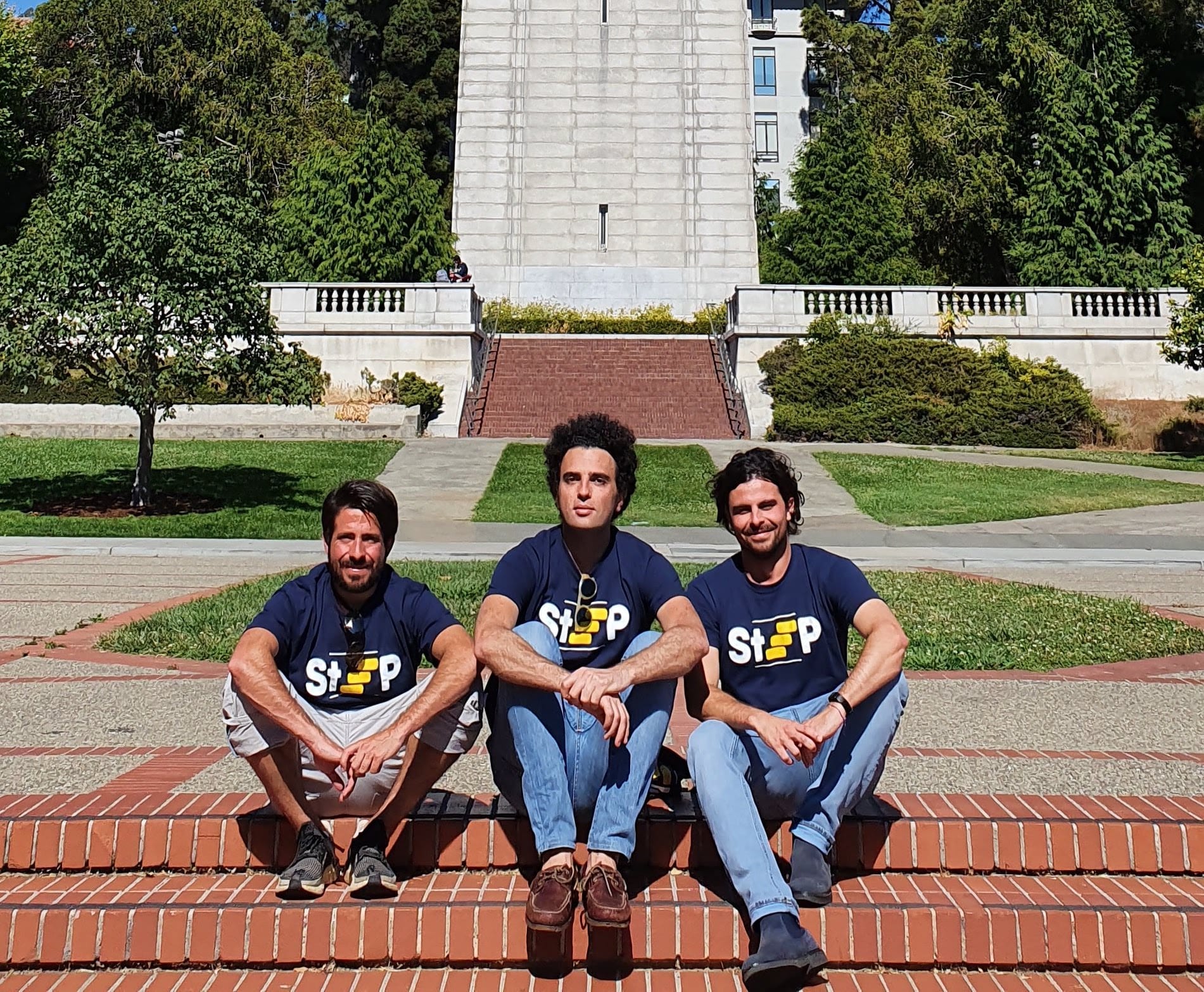
When Santiago Pezzoni isn’t in his Berkeley Haas MBA classes, he’s running his fintech startup, Digiventures.
And when he’s not running Digiventures, he’s helping other UC Berkeley students start their own companies as co-founder and program manager of StEP (Student Entrepreneurship Program), a 10-week campus-wide incubator that has so far assisted 120 startups.
“There are so many people on campus—PhDs, postdocs, engineers—who have fantastic ideas and technologies, but you ask them ‘how will you make that a business?’ and they say, ‘I’m not sure,’” said Pezzoni, MBA 21, who co-founded StEP with Santiago Freyria and Francesco Dipierro, both MBA 20. “We’re figuring out how to get them involved and help them take their fantastic ideas into the world.”
Launched in 2019, StEP is a cross-collaboration among Berkeley student clubs, faculty, entrepreneurship organizations, and VCs. It aims to fill a gap the founders discovered in the campus startup ecosystem.
“Our research found that while more than 80% of Haas students we interviewed took entrepreneurship classes or had startup ideas, less than 5% were able to access accelerators or pre-seed funding,” Pezzoni said.
“Our research found that while more than 80% of Haas students we interviewed took entrepreneurship classes or had startup ideas, less than 5% were able to access accelerators or pre-seed funding.” — Santiago Pezzoni.
Berkeley students, faculty or alumni can apply to StEP as teams or individuals, and opt to be matched with others. All of the teams meet on Zoom weekly, using skills they learn in StEP to take their ideas forward. They also meet separately each week with mentors to review goals and achievements. At the end of the program, teams pitch their startup plans to investors.
StEP applicants choose one of two paths, depending on whether they are looking for help with an idea or want to be matched with others who already have an idea. The program’s founders reach across programs and schools to find people with the right skill sets needed by the new teams. Later, the founders work to connect the teams with investors who can provide early-stage capital.
“You only do it if you really love this”
So far, 120 startups have completed the StEP program, and 30% of them still exist. About a quarter of participants are from Haas, including Dispatch Goods, founded by Lindsey Hoell, who was last year’s StEP showcase winner and is now growing her company at UC Berkeley SkyDeck, a partnership among Haas, Berkeley Engineering, and the Office of the Vice Chancellor for Research.
Pezzoni, who won the LAUNCH program last year with Digiventures, said StEP helps students to clarify whether the startup life is for them. “Being an entrepreneur is not a sexy life,” he said. “It’s tough, and you only do it if you really love this. You have to decide why you want to be a founder.”
“Being an entrepreneur is not a sexy life,” he said. “It’s tough, and you only do it if you really love this. You have to decide why you want to be a founder.”
StEP’s founders say they work about 20 hours a week apiece on the program, chatting often with startup stakeholders across campus including Rhonda Shrader, executive director of the Berkeley Haas Entrepreneurship Program (BHEP), Caroline Winnett, executive director of Berkeley SkyDeck, and former Haas Dean Rich Lyons, now UC Berkeley’s Chief Innovation and Entrepreneurship Officer, who supported StEP from its inception.
Moving through the startup ecosystem
The typical trajectory for new startup teams is to start with a program like StEP and continue with a Berkeley program like NSF I-Corps , CITRIS Foundry, Form+Fund, and then, with that experience under their belts, apply to the LAUNCH incubator program. María del Mar Londoño, MBA 21, founder of SuperPetfoods, won the StEP finals two years ago and continued on to the LAUNCH finals. StEP co-founder Freyria also went through LAUNCH as a co-founder of Callisto Spirits, a botanical rum maker that raised $650,000.
Bernardo Magnani, MBA 21, who is part of the StEP leadership team, left a consulting career to co-found Lastbit, and was accepted to the prestigious Y Combinator startup accelerator program. Magnani just raised $2 million for the company, which allows customers to make instant low-cost global Bitcoin payments.
“I’m such a fan of StEP,” Shrader said. “Sometimes the hardest part of entrepreneurship is just finding a teammate or asking a bunch of questions with people who are all learning together. StEP is just a beautiful resource for the campus—designed and delivered by students.”
The passion to keep building the program unites the StEP team, Dipierro said.
“We’re working to build something that will continue, that can be sustainable at UC Berkeley for the next 10 years,” he said.
Berkeley Haas women of influence
How Robinhood’s trading app spurs investors’ herding instincts: Q&A with Prof. Odean

Last year, when Berkeley Haas finance professor Terrance Odean was researching why users of the popular trading app Robinhood tended to “herd” into a small number of stocks, he never imagined a situation like what unfolded last week with GameStop.
“It was like a supernova of herding events,” he said.
Shares in the moribund video-game retailer soared more than 400% over three days when a mob of investors—many congregating on the Reddit chat room WallStreetBets—coordinated to buy the stock en masse. It fell 44% the next day as Robinhood and other brokerage firms temporarily curbed new purchases of GameStop. Although trading has been restored, the stock has been mostly down but remains volatile. Tens of billions of dollars of market value have been created and erased.
Odean had been examining how Robinhood’s easy-to-use technology drives investor behavior and share prices. The Menlo Park company, founded in 2013, has built an enormous following, especially among young investors. It was “the first brokerage to offer commission-free trading on a convenient, simple, and engaging mobile app,” Odean wrote in a working paper he co-authored with three other finance professors.
Making trading fun
The Robinhood app makes investing fun and—critics say—addictive. New members get a free share of stock after they scratch off the image of a lottery ticket, and when they reach certain milestones, digital confetti rains down on their screen. Robinhood users can begin trading as soon as they open an account.
“Half of Robinhood users are first-time investors, who are unlikely to have developed their own clear criteria for buying a stock,” the paper says. “The app prominently displays lists of stocks in an environment relatively free of complex information. For example … Robinhood only provides five charting indicators, while TD Ameritrade provides 489.”
The app focuses attention on Robinhood’s 100 “Most Popular stocks,” and a narrower “Top Mover” list that shows which 20 stocks, throughout the day, have the biggest positive or negative percentage changes.
Using Robintrack, a database of the most popular stocks among Robinhood users from May 2018 until August 2020, the researchers compared trading by its users to other retail investors. They also looked at trading in “attention-grabbing” stocks on three days when Robinhood system outages prevented its users from trading.
They concluded that the simplicity of Robinhood’s app, combined with its users’ inexperience, made them more likely to herd, or pile into a smaller set of stocks, than other retail investors.
Short sellers took note
They also looked at what happened to a stock’s price when it was subject to a herding event or “extreme herding” event, the latter being days when the number of Robinhood users who own a stock grew by 1,000 users and 50% from the previous day. These stocks posted abnormally large gains on the day of herding—averaging 14% for a regular herding event and 42% for an extreme herding event. The next day, however, returns turned “significantly negative” and were still down—5% and 9%, respectively—after 20 days.
“While some Robinhood users undoubtedly made money, in our analysis, a greater number of them lost money,” Odean said.
The team also documented a “marked increase in short selling for stocks involved in Robinhood herding events,” a sign that some investors have been exploiting these “predictably negative returns” by placing bets that Robinhood favorites will fall. The paper’s co-authors are Brad Barber of UC Davis, Chris Schwarz of UC Irvine and Xing Huang of Washington University in St. Louis.
We asked Odean about Robinhood, GameStop and lessons to be learned from recent events.
Q: Did you ever dream there would be a herding event like GameStop?
A: It would be lovely to say I saw it coming, but no. What we are seeing with Robinhood is herding similar to what’s been documented in other situations, but previously the magnitudes have been much lower. We saw herding in the 1970s and 1980s, when people on Monday would buy stocks mentioned Friday evening on Louis Rukeyser’s Wall Street Week, a public-television show. Now what you have is a lot more investors having their attention funneled into what is often a small set of illiquid stocks and buying at the same time.
What’s surprising about GameStop was the extent to which people were writing (primarily on the Reddit chatroom WallStreetBets) about how we will all consciously do the same thing at the same time and thus possibly affect market prices. That aspect of the GameStop fiasco is not in our paper.
Is what you just described illegal?
I’m not an attorney but my understanding is, if two hedge funds started sending emails to each other saying if we both buy these stocks in large numbers on Tuesday, that will drive the price through the roof—that would probably be illegal.
I’m not sure what will happen with GameStop, but it’s a lot harder to make a case against millions of people spending small amounts of money than against a small number of sophisticated investors doing this with a lot of money.
I’m not sure what will happen with GameStop, but it’s a lot harder to make a case against millions of people spending small amounts of money than against a small number of sophisticated investors doing this with a lot of money.
Has Robinhood made investing too simple?
It has changed people’s behavior by making it simple. Robinhood’s mission statement is to democratize investing for all. Jack Bogle (founder of Vanguard Group) did that years ago. You can buy a Vanguard index fund, pay $4 a year for every $10,000 you have invested and have a well diversified, long-term investment in the market and the U.S. economy. That’s democratization. What Robinhood has done is make it easy to trade.
How does Robinhood make money?
Hand over fist. They sell their customer’s orders to market makers. If you want to sell, the market makers buy from you, and vice versa. When market makers take the other side of a trade, they face asymmetric information risk—the risk that they are trading with someone who knows more than they do. Market makers seem to think that when they trade with someone from Robinhood, they are not taking that risk. They think, if I always take the opposite side of the trade from the side Robinhood is on, I will make so much money I can pay Robinhood.
This is called “payment for order flow,” and it’s not new. Other retail brokerage firms also do it.
(In December 2020, the Securities and Exchange Commission charged Robinhood with failing to properly disclose its payments for order flow to customers and failing to seek the best terms for their trades. Robinhood paid $65 million to settle the changes without admitting or denying guilt.)
Should regulators outlaw this practice?
It’s complicated. Without payment for order flow, there won’t be commission-free trading. My concern is that investors are only aware of costs that are direct and explicit. Most investors are aware of commissions, but not payment for order flow. If investors mistakenly believe that zero commissions means free trading, they are likely to trade more actively and more speculatively. I believe that we should get rid of payment for order flow, but one has to be careful about the unintended consequences of well-intended regulations.
What is the most important lesson to take away from this GameStop event?
Retail investors whose trades are highly correlated—through forums such as WallStreetBets or other means—have more market power than many people on Wall Street expected.
Retail investors whose trades are highly correlated—through forums such as WallStreetBets or other means—have more market power than many people on Wall Street expected.
Why did Robinhood temporarily halt new purchases in Gamestock, AMC and other stocks subject to extreme volatility?
Depository Trust and Clearing Corporation (the clearing house for Robinhood’s trades) required Robinhood to put up more capital to ensure that Robinhood would make good on the trades it placed for its clients. Brokerages are required to use their own money as collateral while they wait for trades to clear. Robinhood’s clearing house increased its capital requirement because of the surge in orders in GameStop and some other stocks and because these stocks became hugely volatile. Robinhood reopened trading after it raised $3.4 billion in additional capital.
Traders allegedly targeted companies like GameStop because a large percentage of their shares had been sold short by hedge funds and others. This means the short sellers borrowed GameStop shares and sold them, hoping to buy them back later at a lower price and pocket the difference. When GameStop shares skyrocketed, hedge funds suffered massive losses when they had to buy the shares at higher prices, which put even more upward pressure on GameStop shares. Some traders are portraying short sellers as the “bad guys” and Robinhood traders as “good guys.” Are there really any good guys and bad guys here?
Financial economists believe that short selling plays a useful role in markets by enabling investors with negative information or opinions about a stock to influence prices and thus keep prices from being set only by investors with optimistic views. Short sellers do, however, sometimes behave badly by promoting negative rumors about companies after they’ve established their short positions. I have not read that this was a major problem with GameStop. I would say that people who intentionally manipulate stock prices qualify as bad guys. And Jack Bogle—who tried to make investing less expensive and safer—was a good guy.
Prof. Adair Morse joins Biden administration as a treasury department deputy
Adair Morse, an associate professor of finance at the Haas School of Business, has been named to the Biden Administration’s treasury department as deputy assistant secretary of capital access in the Office of Domestic Finance.
The U.S. Department of the Treasury, led by Prof. Emeritus Janet Yellen, announced the appointment today.
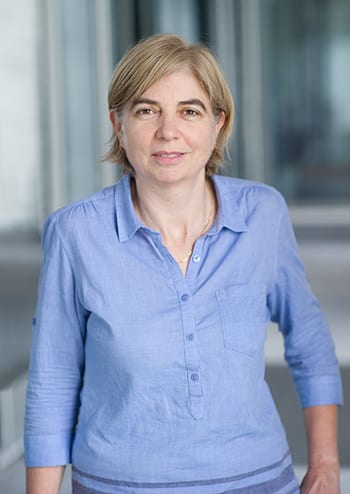
“I’m thrilled to have the opportunity to serve in the Biden Administration and to join the team at treasury, serving the people of this great country,” said Morse, the Soloman P. Lee Chair in Business Ethics, who is taking a leave from the Haas Finance Group to commit to her new role.
“We will miss Adair at Haas, where she has conducted groundbreaking finance research and launched the Sustainable and Impact Finance (SAIF) initiative with (former Haas Dean) Laura Tyson to train many new leaders in the field,” said Dean Ann Harrison. “She has already made an impact in helping small businesses in California through her work on the California Rebuilding Fund. I have no doubt she will have an even greater impact on a national scale.”
The Office of Domestic Finance develops policies and guidance in the areas of financial institutions, regulation, capital markets, and federal debt finance. Its community and economic development division coordinates small business finance and development, housing policy, capital access, and issues related to underserved communities.
Morse, who holds a PhD in finance from the University of Michigan’s Ross School and two master’s degrees from Purdue University, joined Haas in 2012 from the University of Chicago’s Booth School of Business. Her research interests include equity issues in financial services and algorithms, small business survival, sustainable investing, discrimination and corruption, venture capital, and pension management. The unifying theme in her work, she has said, is “leveling economic playing fields.”
“Adair’s groundbreaking research has looked at important issues, like small business survival in the city of Oakland, consumer lending discrimation in fintech, and the pervasiveness of corporate fraud,” said Prof. Catherine Wolfram, associate dean for Academic Affairs and chair of the faculty. “As a pioneering, creative thinker in so many areas, she will have plenty of opportunity to bring her financial and social impact leadership to the table.”
As a pioneering, creative thinker in so many areas, she will have plenty of opportunity to bring her financial and social impact leadership to the table. —Prof. Catherine Wolfram, chair of the faculty
Morse has spent much of the pandemic using her finance expertise to try to help small businesses. Last spring, Morse and Tyson began working on a strategy to use public capital to attract private lenders to provide low-interest credit to help vulnerable small businesses get through the crisis. They first helped develop a program with the City of Berkeley, and then worked with others—including Yellen, who was then on Gov. Newsom’s Task Force on Jobs and Competitiveness—to implement an innovative public-private loan structure at the state level. Their work helped launch the California Rebuilding Fund, run by the Governors’ Office of Business and Economic Development (GO-Biz) and aimed at some of the state’s smallest businesses in under-resourced communities.
At Berkeley Haas, Morse also ran the Haas Impact Fund and Sustainable Investment Fund curriculum, managing two endowment funds with Haas students. The Sustainable Investment Fund is the first and largest student-led Socially Responsible Investing (SRI) fund within a leading business school.Until recently, Morse served on the Governance and Allocations Committee of the California Rebuilding Fund, as well as on the expert panel for the Norwegian sovereign wealth fund, advising on issues of sustainability and innovation.
Corporate responsibility and the two minds of Milton Friedman
Maura O’Neill: Creating and inspiring impactful entrepreneurship
Evidence shows the Clean Air Act has reduced racial disparities in exposure to pollution

Air pollution has disproportionately hurt minority and low-income communities, leading to reduced life expectancy, research has found. Yet a lack of data has stymied efforts to quantify the problem—and its causes—nationwide.
A recent study, anchored by new satellite-based measures of air quality, found some encouraging news: The gap between Black and white Americans’ particulate exposure has declined over the past two decades, due largely to enforcement of the Clean Air Act in the country’s most polluted areas.
Berkeley Haas Assoc. Prof. Reed Walker, along with Princeton University Prof. Janet Currie and Economist John Voorheis of the U.S. Census Bureau, combined satellite measurements of local air quality with administrative data on 30 million household’s locations to examine how racial disparities in pollution exposure have evolved over the last 20 years. Their working paper was recently released by the National Bureau of Economic Research (NBER).
“The existing research on air pollution has been hampered by a sparse Environmental Protection Agency monitoring network, but satellite-based measurements of air quality have greatly expanded the ability of policymakers and researchers to fill in the huge gaps in exposure measurement throughout the U.S.,” said Walker, of the Business and Public Policy Group. “We’ve used this new data to come to show how the Clean Air Act has led to a narrowing of the gap in pollution exposure between Black and white communities.”
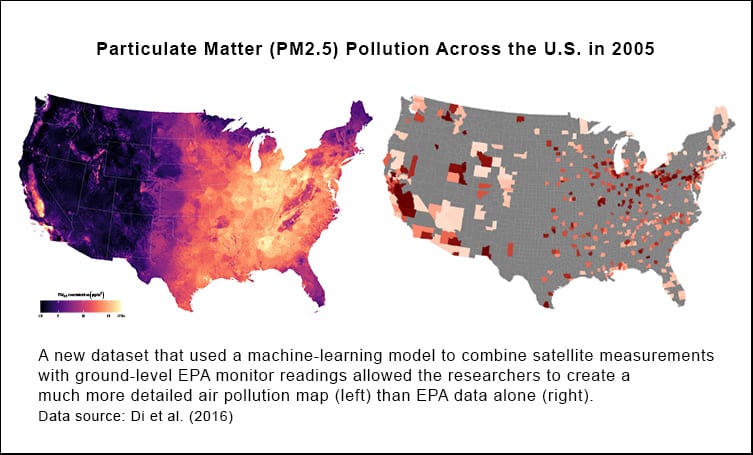
Walker said he believes this is the first paper “to explore the underlying causal drivers that contributed to the narrowing of this gap.” The researchers combined fine-grained measures of ambient air pollution levels of particulate matter for the entire United States. with more than 30 million individual survey responses from the U.S. Census and the American Community survey. They found that while African Americans were more likely to live in areas with higher pollution, relative improvements in air quality from 2000 to 2015 have narrowed this gap considerably.
This raised the question of whether the improvements seen over the last 20 years were because Black Americans moved to less-polluted neighborhoods, or whether neighborhoods with high percentages of Black Americans became cleaner.
The researchers estimated that only a small share of the reduction in the exposure gap was due to shifting population patterns, as Black Americans moved to less-polluted neighborhoods and white Americans moved to relatively dirtier ones, such as city centers. However, they estimated that these mobility patterns accounted for only 13% of the decrease in the Black-white exposure gap over the study period.
Instead, they found much stronger evidence for a second explanation—that the decline in the Black-white mortality gap was primarily the result of air quality improvements within areas with a higher share of Black residents. And the improved air quality in these areas correlated with the introduction of national ambient air quality standards for small particulates (PM2.5) in 2005, when the Environmental Protection Agency (EPA) began enforcing these new standards under the Clean Air Act.
Each year, the EPA targeted counties that were not in compliance with the pollution standards. Following enforcement actions, pollution levels declined by about 8% in non-compliant counties relative to those counties in compliance with the Clean Air Act, Reed and his co-authors found.
In fact, the researchers estimated that 60% of the overall decline in the Black-white pollution gap was due to the enforcement of Clean Air Act regulations in the most polluted areas.
“The Clean Air Act has disproportionately improved air quality in low-income and minority communities, and this is almost by design given how the Act was written over 50 years ago,” Walker said.
Lucas Davis: Electrification mandates and slow housing growth
Students return to reimagined courses and major technology upgrades
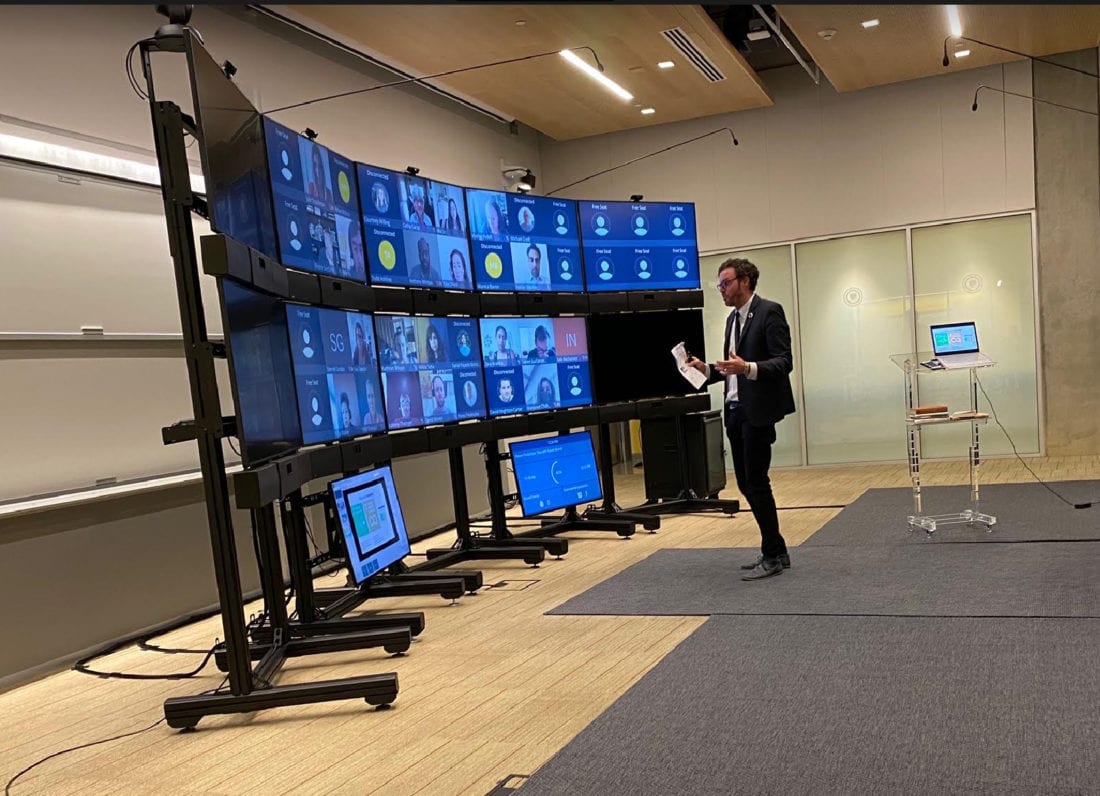
Berkeley Haas faculty spent the summer with a ticking clock and a lofty challenge: to pull apart their courses and rebuild them to give students as rich an experience as possible, during a maddeningly uncertain time.
“It’s an interesting challenge—how to take what’s different about this environment and improve teaching,” said Finance Prof. Terry Odean. “One of the big challenges for the fall semester is helping students feel like they are part of the class, part of the school, and part of a group of students.”
It’s an interesting challenge—how to take what’s different about this environment and improve teaching. —Prof. Terry Odean
When students begin class this month, they’ll benefit from the hundreds of hours Odean and the rest of the Haas faculty have spent on redesigning their classes with a single goal in mind: creating a top-notch academic experience focused on maximizing student engagement.
Working to match, and potentially improve upon, some aspects of the engagement level of a live, physical classroom online is no easy feat. It has involved hours of brainstorming, planning, workshop training, and major investments in a host of new technologies to reinvent instruction. It’s been all hands on deck: Dean Ann Harrison said she’s proud of the work the faculty, graduate student instructors, and the Haas Digital and Exec Ed Digital teams have done over spring and summer. “After watching last spring when our faculty and staff moved within 36 hours to online teaching when the coronavirus broke out, I believe there’s little that we can’t do virtually going forward,” Harrison said. “Their hard work has opened up so many other opportunities for the future of teaching at Haas.”
A different experience
“We’re very excited to debut what we’ve learned and implemented,” added Prof. Catherine Wolfram, associate dean for academic affairs & chair of the faculty, who is overseeing the transition with Prof. Jennifer Chatman, associate dean for learning strategies, and Jay Stowsky, senior assistant dean for instruction. “I think this will be many cuts above what students saw in the spring, and they’ll be pleasantly surprised,” Wolfram said.
While Berkeley’s fall semester officially begins on Aug. 24, students in the evening and weekend MBA program started their first classes last week. Andrew Celin, MBA 22, said he enjoyed his first class taught by Assoc. Prof. Jose Guajardo from one of the classrooms at Chou Hall upgraded for virtual teaching.
“The difference in learning experience was immediately evident, and I think it put everyone into the mindset that we were truly in class and not on a webinar call,” he said. “The camera was following Prof. Guajardo around the room as he moved and used different whiteboards. Having the option to simultaneously view a slide and see the professor at the whiteboard added tremendously to understanding and keeping students engaged after a full day’s work.”
Here are details of some of the innovations:
- Launching virtual classrooms: The school has improved existing classrooms and invested in four new state-of-the-art “virtual classrooms” in conjunction with UC Berkeley Executive Education. Two of the classrooms will be used for executive education programs, and two by the MBA programs for core classes. The setup includes multiple cameras installed at various angles, allowing students to choose their view of the instructor; a digital whiteboard which instructors can use in person and students can write on remotely; and a curved wall of high-resolution monitors and directional speakers where the instructor can see and hear up to 84 students at once. Mike Rielly, CEO of Berkeley Executive Ed, said these virtual classrooms were designed to simulate a live classroom environment as closely as possible. Senior Lecturer Homa Bahrami of the Management of Organizations Group said the setup works well for her because she can easily use a whiteboard and move around while she teaches. “It creates intimacy,” she said. “I can walk up to students and engage with them.” In addition to the four new virtual classrooms, faculty can also host Zoom classes from Chou Hall classrooms that have undergone technical upgrades for virtual teaching. Instructors have access to automated cameras, high-speed internet, and all the traditional aspects of a classroom, and they can see students on newly installed large monitors.
- Creating small student groups to engage with professors: To increase engagement, small groups of students will have the opportunity to meet weekly with a faculty member for a one-hour check-in. Half the ladder faculty have already signed on to participate in this new Faculty-Student Engagement Series (FSES), which invites students to discuss anything from current events to the faculty member’s research to how students are coping with shelter-in-place, Chatman said. “The goal, in lieu of the fact that there won’t be in-person interactions between students and faculty, is to really get to know that faculty member,” Chatman said. Bill Pearce, the Haas chief marketing officer and a professional faculty member in the Marketing Group, scheduled more than 100 individual Zoom meetings with students between mid-March and May. Going forward, he said the Faculty-Student Engagement Series will be a valuable additional way to replace the time before or after class students often spent with faculty before the pandemic.
- Investing in high-quality asynchronous content: Faculty have invested many hours in improving the production quality of the lectures they are recording (lighting, sound, and graphics), Chatman said. In the “flipped classroom” approach that is considered a best practice for online instruction, students are typically asked to watch lectures in advance and to be prepared to discuss the content, take quizzes, or move into breakout groups during class time. Odean, a veteran of online content creation, built a home studio, with special lighting and cameras, where he filmed the 50 videos he uses with his course. “It’s a lot of work, a shocking amount of work,” said Odean.
- Applying learnings from workshops to online teaching: Over the summer, more than 120 faculty members, GSIs and staff took part in four different workshops offered by the Haas Digital team—ranging from beginner to advanced levels. Haas Digital Executive Director Sara Sieteski said her group’s goal was to help the faculty improve student engagement, no matter what their level of online expertise. Key to that success, she said, was getting them to think about a live session as if it were a radio program. “Every minute is scripted out,” she said. “Dead air kills a class just like dead air kills radio.” To that end, faculty members will be relying more than ever on their graduate student assistants (GSIs), who are key to making classes flow smoothly—reading student questions from the chat, making sure students are called on, and helping with online quizzes and polls.
- Zooming, with all the bells and whistles: In Haas Digital workshops and at home, faculty have been learning how to use Zoom features more effectively to break up classroom time. “The one issue that I am concerned with going into the classes is what we are calling ‘Zoom fatigue,’ said Shruti Sethi, EWMBA 23, who starts classes Aug. 8. To combat fatigue, faculty will be adding more games and simulations, and more class time devoted to discussions rather than lectures, Chatman said. Veselina Dinova, a professional faculty member who teaches finance, said she’s using the breakout rooms more to allow students to get to know each other and discuss specific topics in a small group before opening up discussion with the whole class after the breakout session. She also uses breakout rooms for breaks that allow students to catch up personally. “The feedback has been overwhelmingly positive,” she said. In addition, a new instructional designer, expected to join Haas Digital this month, will work with faculty to add more sophisticated data visualizations to MBA courses. The designer will use Jupyter notebooks, a web-based interactive platform created at UC Berkeley. Prof. Don Moore said he’s already reached out to Sieteski, asking about how he can work with the designer on simulations for his courses.
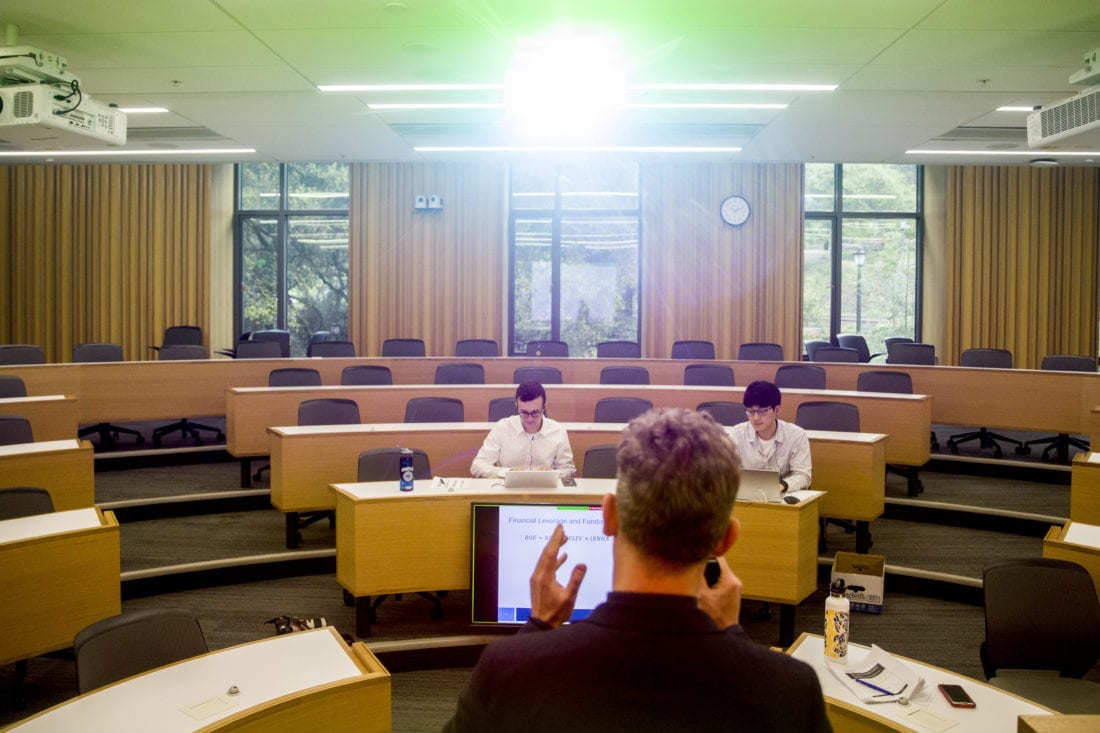
While the Haas School has made significant investments in new technology and training, virtual teaching at Haas isn’t new. Prof. Cameron Anderson pioneered an online version of his popular course Power & Politics in 2012. Since then, he has worked continuously to improve the online version—the latest version, created with Haas Digital, is now the most in-demand elective in the EWMBA program—and has shared his best practices with other faculty members.
Anderson uses online discussion forums, which make up almost a third of the course. “It forces students to think through these issues really deeply in a way that doesn’t happen as often in my in-person class,” he said. “Because of that deeper, critical thinking, I still think my online students learn a bit more than my in-person students.”
It forces students to think through these issues really deeply in a way that doesn’t happen as often in my in-person class. —Prof. Cameron Anderson
There are also big benefits for students who are more reticent in traditional settings, he says. “In a normal classroom, 20% to 30% of the students do almost all the talking,” he said. “In the online class, everyone is chiming in, and I try hard to respond to as many as I can.”
Even so, online teaching can never fully replace the in-person experience, which many students—and faculty—crave, Anderson said. The goal is to return to a hybrid approach that blends online lectures with small-group, in-person discussions as soon as state and local authorities approve.
In the meantime, Haas is “maximizing and taking advantage of things that we can do as a small school,” Wolfram said.
Nine new professors join Berkeley Haas faculty
This fall, Berkeley Haas welcomes a diverse and international group of nine new professors, including a record five women. The new faculty members include one full professor, two associate professors, and six new assistant professors, who are from Italy, Argentina, France, China, Canada, and California.
In addition to the new professors, seven new lecturers have joined the professional faculty to teach classes in various programs.
Associate Professor Matilde Bombardini, Business & Public Policy
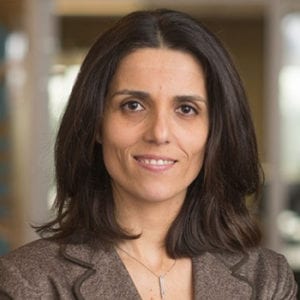
Though Matilde Bombardini grew up in Imola, a city in Northern Italy, UC Berkeley has long had a special place in her life and career. It’s where she came as an undergraduate student on an exchange program in 1998-99.
“I took a graduate course in the Economics Department that opened the door for me to pursue a PhD at MIT (Massachusetts Institute of Technology). Professor David Romer was one of my letter writers for PhD admission,” she said. Bombardini earned her PhD from MIT in 2005.
Before coming to Berkeley, she was an associate professor at the University of British Columbia’s Vancouver School of Economics.
Bombardini is conducting ongoing research on the role of corporate charity as a channel for influencing regulation, and as a tool for political influence in general. She is also researching the role of politicians’ information in congressional voting on China’s Normal Trade Relationship with the U.S.
In her free time, Bombardini likes to ski, sail, hike, and enjoy the outdoors. “I am eager to explore the Tahoe area ski slopes, and the good weather in the Bay Area will make it easier to go back to sailing.” She is a beginner electric guitar player and likes all rock music.
Professor Francesco Trebbi, Business & Public Policy
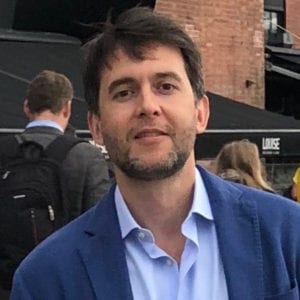
As a child in Italy, Francesco Trebbi played basketball on a kids’ team with Kobe Bryant, whose father was a star in the city’s basketball team at the time. An athletic career did not prove as promising as his ventures in economics have been, however. “Our team lost even with Kobe on our side, so you can just imagine how bad of a basketball player I must be!” said Trebbi.
Instead, Trebbi attended Italy’s prestigious Bocconi University, earning a degree in political economy, before going on to receive his MA and PhD in economics from Harvard University.
Before joining Berkeley, he was the Canada Research Chair and professor of economics at the University of British Columbia Vancouver School of Economics, and an assistant professor of economics at the University of Chicago Booth School of Business.
Trebbi’s academic research focuses on political economy and applied economics. He has studied the design of political institutions, elections, political behavior, campaign finance, lobbying, and financial regulation. He has also worked on the political economy of development, ethnic politics, and conflict. His primary teaching interests are in political economy, applied economics, and applied econometrics. Currently, he is working on new empirical approaches to the study of behavior of government officials, voters, and special interest groups. He also maintains an active research program on the political economy of non-democratic and low-income countries.
Trebbi also has an artistic streak. “I have only one modest talent outside of economics: I paint. Non-figuratively. Many economists I know have been inflicted with one canvas or two, which I think they keep in their homes and offices out of affection,” he said.
Associate Professor Ricardo Perez-Truglia, Economic Analysis and Policy

Ricardo Perez-Truglia grew up in the Ciudadela neighborhood near Buenos Aires, Argentina, moving to the U.S. for a PhD in economics from Harvard University. He joins Berkeley Haas from UCLA’s Anderson School of Management, where he was an assistant professor of economics for four years.
As a behavioral economist, one of Perez-Truglia’s main research interests is how social image and social comparisons shape economic behavior: What do others think of you? Are you rich? Smart? Hard-working? The desire to shape these opinions is a powerful driver of human behavior, he said.
His research often involves collaborating with private and public institutions, sometimes using large datasets to study the effects of policies, or conducting large-scale field experiments with their clients or employees. He studies a range of topics such as transparency, tax collection, and macroeconomic expectations. “My research is intended to inform firms and policy makers in the developed and developing world, leading to practical applications,” he said.
Perez-Truglia says he would be happy to talk to students about economics and social science research as well as two more personal topics: “I’m familiar with the challenges associated with being an immigrant and a first-generation college graduate, so I’m happy to discuss them with any of the Berkeley students who are facing the same or similar challenges.”
He’s also happy to talk about Latin America—and his favorite sport, fútbol or soccer. “I’d love to play soccer with the students if they want. I am a huge soccer fan—my favorite teams are River Plate (from Argentina), FC Barcelona (Spain) and obviously, I care the most about the Argentine national team.”
Assistant Professor Sydnee Caldwell, Economic Analysis & Policy
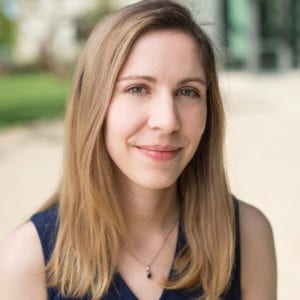
Sydnee Caldwell, who grew up in Fallbrook, Calif., is coming “home” to Cal. She graduated from UC Berkeley with a double bachelor’s degree in applied mathematics and economics in 2008, before earning her PhD in economics from MIT in 2019. She joins Berkeley Haas after serving a year as a post-doctoral researcher at Microsoft Research New England.
Caldwell’s research focuses on topics of labor and personnel economics, and she is currently interested in how firms find and recruit new employees. She has also conducted research on the gender-wage gap, recently examining how it plays out in the gig economy. In a paper forthcoming in American Economic Journal: Applied Economics, she looks at the differences between taxis and ridesharing services like Lyft and Uber from the driver’s perspective.
She says students should feel free to come to her with any questions they have about economics or data science, regardless of whether they are in her data and decisions class. “I am always interested in how companies and people use data to make decisions,” she says.
Assistant Professor Solène Delecourt, Management of Organizations
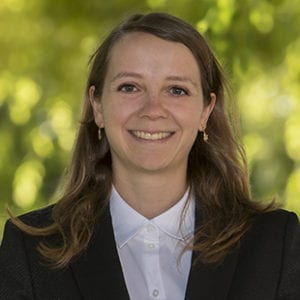
Solène Delecourt hails from Lille, a city at the northern tip of France. She earned her PhD in organizational behavior at the Stanford Graduate School of Business.
Delecourt’s research centers on inequality in business performance. She is passionate about using rigorous social scientific theories and methods to delve deeply into this phenomenon, particularly among entrepreneurs in emerging economies. Her research agenda focuses on what drives variation in profits across firms, and how to reduce inequality in business performance among entrepreneurs in different market settings—including India, Uganda, and the U.S. In the three papers that made up her dissertation, Delecourt used field experiments to understand how business characteristics, client search behavior, and peer-to-peer advice among entrepreneurs affect business success.
Delecourt wants students to feel free to come to her for discussions. “I would love to hear about their projects, especially as they relate to issues of gender inequality,” she said.
In her free time, she enjoys swimming and is excited for the numerous outdoor pools on campus. She also loves good bread and pastries and cannot wait to try out Fournée Bakery.
Assistant Professor Douglas Guilbeault, Management of Organizations

Douglas Guilbeault is from Tecumseh, a small town in Southwestern Ontario, Canada. He received his PhD in 2020 from the Annenberg School for Communication at University of Pennsylvania.
Guilbeault studies how people build shared concepts as they communicate in daily life, specifically within social networks and organizations. “Big problems on my list to tackle are: bias reduction in crowdsourcing, cross-cultural concept translation, equitable content moderation over social media, and enhancing scientific discovery,” he said.
Guilbeault is developing a computational theory of how categories emerge, grow, and evolve in social systems, as well as how categories shape social systems themselves.
Guilbeault looks forward to meeting his new colleagues. “I am most excited by the dynamic network of colleagues that I will get to exchange ideas with and learn from,” he said. “The Management of Organizations group at Haas is absolutely distinct in its integration of both macro and micro perspectives on organizations, and my work explores this interface.”
When he’s not conducting research or teaching, Guilbeault makes music and writes software that produces digital art. He also loves running, biking, hiking, and seeing live music.
Assistant Professor Xi Wu, Accounting
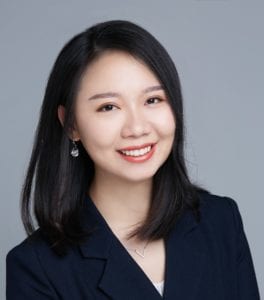
Xi Wu is originally from Beijing, China. She received her PhD in accounting from New York University’s Stern School of Business after studying mathematics and economics as an undergrad at Cornell University.
Wu’s research focuses on the intersection of securities regulation, corporate governance, and valuation. Her current research studies how regulations affect firms, how managers and creditors use information to address agency issues, and how to use newly-available data to value firms and cryptocurrencies. Her recent work shows that more heavily regulated companies fare significantly better during extreme economic downturns—including the coronavirus pandemic.
Since she is currently studying the valuation of cryptocurrencies and the market of initial coin offerings (ICOs), Wu says that being close to both the San Francisco Bay Area and the Silicon Valley is of huge value to her, and she is excited about the potential of connecting fintech research to the practical world.
Wu enjoys hiking and skiing in her free time.
Assistant Professor Luyi Yang, Operations & Information Technology Management
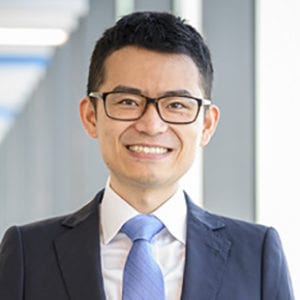 Luyi Yang, a native of Shanghai, China, joins Haas from Johns Hopkins University, where he was an assistant professor at the Carey Business School for the past three years. He received his PhD from the University of Chicago Booth School of Management in 2017.
Luyi Yang, a native of Shanghai, China, joins Haas from Johns Hopkins University, where he was an assistant professor at the Carey Business School for the past three years. He received his PhD from the University of Chicago Booth School of Management in 2017.
Yang’s work is focused on developing new theories for understanding emerging business models and policy initiatives in service operations. On the business front, he has studied innovative mechanisms for managing queues—which are often a key feature of service systems—such as line-sitting, mobile ordering, and referral priority programs. On the policy front, he has studied the welfare implications of expanding patient choice in elective surgeries, as well as the pricing and environmental implications of the right-to-repair legislation, which gives consumers the ability to repair and modify their own consumer electronic devices.
Yang is excited to experience the innovative culture of Haas. He said students should come talk to him about their startup ideas and new business models. “Over the years I have engaged many startups in my research and teaching. If you have an innovative idea to start a new business, we should talk!” Yang said. In his free time, he likes travelling and hiking.Assistant Professor Biwen Zhang, Accounting

Biwen Zhang is from Nanchang, the capital and largest city of Jiangxi Province, China. She completed her PhD in accounting in 2020 from Simon Business School at the University of Rochester.
Her main research interests are in the areas of financial intermediaries and corporate governance. Specifically, her current research revolves around the economic implications of conflicts of interest faced by capital market participants.
In her free time, Zhang likes to play table tennis and badminton.
New Professional Faculty
New lecturers this fall include Ahmed Badruzzaman, Deborah Krackeler, Don Hanna, and Sachita Saxena, who will each teach a course in the Undergraduate Program; James Zuberi, who will teach a course in the Executive MBA Program; and Temina Madon, who will teach in the Full-time MBA Program. Sasha Radovich will join in the spring to teach a class in the Undergraduate Program.
Black Voices: Berkeley Haas community shares perspectives on racism and the fight for social justice
In response to the violence against Black and African-American people and the wave of protests and unrest across the country, we’re sharing some of the perspectives of our Black students, staff, faculty, and alumni.
Clockwise from left: Marco Lindsey, associate director at DEI at Haas; Erika Walker, assistant dean of the undergraduate program; Dan Kihanya, MBA 96, Elisse Douglass, MBA 16; Ace Patterson, MBA 16; and Bree Jenkins, MBA 19.
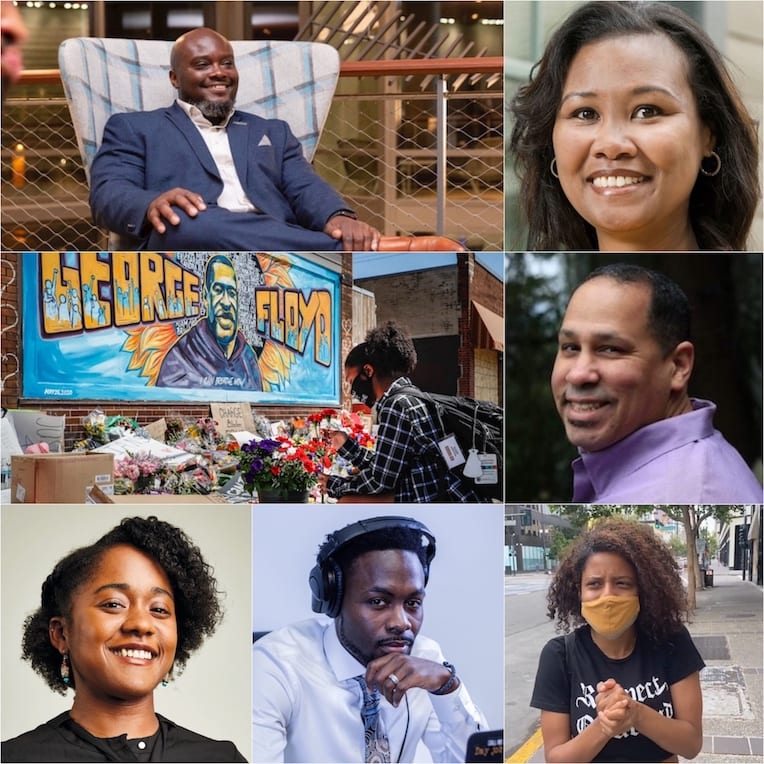
Binundu Isaiah Samuel, EMBA 20: It is not OK!
In response to the violence against Black and African-American people and the wave of protests and unrest across the country, we’re sharing some of the perspectives of our Black students, staff, faculty, and alumni. Binundu Isaiah Samuel,
co-president of the Berkeley Haas Executive MBA Class of 2020, sent this letter to classmates. We’re reposting with his permission.
Dear Executive MBA Family,
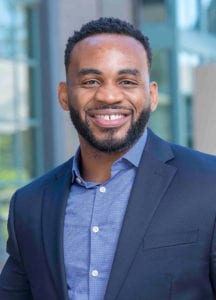
I watched the execution of George Floyd in horror and pain. Sadly, images and stories of similar atrocities have become all too common yet, this one hit different! I watched a man cry out for mercy only for his cries to fall on deaf ears. I watched a man in pain and agony cry out for his mother in fear of losing his life! Yet, his cries were drowned out by hate, ignorance, and a lack of decency for a fellow human being. No one was able to intervene, no one was able to save George Floyd, or Ahmaud Arbery, or Breonna Taylor. The cries of the brutalized have echoed for generations, and now here we are. It is not ok!
The history of this nation is marred by episodes of hate. Repetitive cycles, where black bodies and lives are mangled, abused, beaten, disrespected, tortured, and made to feel less than human. It is not ok!
I cried as I watched another one of my black brothers struggle for his life, and could not help but think about how that could have easily been me or someone I cared about. The video reminded me of the excessive caution that I have to exercise when interacting with police, for fear of becoming another statistic. The video reminded me of the racial slurs that I’ve endured from ignorant groups and people alike. The video reminded me of how I fear for my black friends and family, and how our safety isn’t guaranteed even at the hands of those sworn to protect us. The video reminded me of the anxiety that I feel about how those in positions of power will react to my application for a job or opportunity when they realize that I am a black candidate. Believe me; being black every day in America is a constant reminder of a broken system that screams “we don’t want you” and to be honest, I am tired. It is not ok!
The video reminded me of the anxiety that I feel about how those in positions of power will react to my application for a job or opportunity when they realize that I am a black candidate.
I am sharing this because I feel that it is important and necessary for us to align as an EMBA community. It is time for us to decide where we stand. Are you going to be on the side of justice, equality, and fairness for all? Or are you going to pretend that there are no problems? The time for pretense is over! The mask has been lifted, and the scars are exposed for all to see – just listen to the cries reverberating from all corners of the globe. The world is in pain. It is not ok!
EMBA 20’s, we are the future. Our cohort will give rise to great leaders who will have the opportunity and power to drive change and influence the world! We must heed the lessons of our past and present to ensure our future will be better. We must remember, that in whatever capacity, the change can start with us!
Thanks to those that have reached out to me—it means a lot! Please know that I do not claim to have the answers – I am still learning, analyzing, organizing, and digesting all that is occurring. As I look for ways to contribute towards a solution, I welcome you to join me in dialogue, partnership, and allyship.
Here is a folder with more anti-racism resources.
Be well and take care, EMBA family.
Binundu Isaiah Samuel
Class Co-President, EMBA Class of 2020
Asst. Dean Erika Walker: Insight into why I’m passionate about social justice and equity
In response to the violence against Black and African-American people and the wave of protests and unrest across the country, we’re sharing some of the perspectives of our Black students, staff, faculty, and alumni.
Erika Walker, Assistant Dean for the Undergraduate Program, shared this letter with her team.
Dear team,
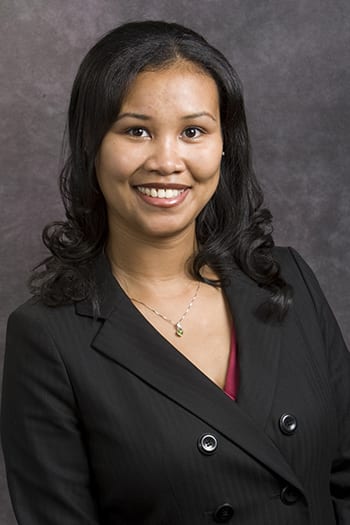
You may have wanted to ask me how I’m doing but something held you back. I probably wouldn’t have processed my feelings enough to have a response at that point anyway. Some days I can talk about it and other days I’m too drained. I don’t have answers and I shouldn’t be the one who has to give them. And as I’ve been reflecting, the bottom line is that I’m not alright. I’m hurting. It is hard to focus on work. I go up and down between feeling sad, terrified, frustrated, hopeless, and angry. Hearing George Floyd cry out for his mother as he took his last breaths under the knee of a police officer broke me. It is my worst nightmare. This is happening repeatedly. I’m tired. I’m traumatized. I don’t understand what it will take for people to be outraged enough to dismantle systems of oppression. To take bold and calculated risks against the racial injustices that we are born into. These systems are what our country was built upon. The history of this nation is built on looting from others. PERIOD. It is embedded as part of the DNA of each institution that guides our lives be it health care, housing, education, financial, or social. And policing has its roots in maintaining “the order of property” from slavery to present. If we can’t acknowledge that fact and talk about it, then how on earth can we start changing the core of how we operate?
Policing has its roots in maintaining “the order of property” from slavery to present. If we can’t acknowledge that fact and talk about it, then how on earth can we start changing the core of how we operate?
You may not recognize all facets of these disparities but I experience them every single day of my life. My husband experiences it every moment as a black man. My three children recognized it as early as four and five years old. As parents, we have to think twice about them playing outside in front of the house, walking to the store, going to the park, or hanging out with friends. I’m terrified every time my son gets behind the wheel and I’m anxious about my 14 year old wanting to learn to drive. It is a sad reality that is reinforced each time aggression is captured on video. White women weaponizing the police against black people. No one policing the police when murdering black people. It is unsafe for black people in America. It is unsafe for my family. It is unsafe for me.
We cannot be okay with “I don’t see color,” “I’m not a bad person,” or “I’m not racist”. If you don’t see color, you are erasing my existence. The existence of my family tree that has its roots in slavery. The existence of this country. If you are worried about YOU not being a racist and protecting how you are perceived, then you aren’t even halfway ready to focus on anti-blackness and anti-RACISM for the good of all. So if you want to know what to do to support, start with you. Then do something. See an injustice? Say something. Research, ask questions, and take action. Vote differently. Question legislature. Think differently. Whatever level of engagement makes sense for you but please, do something.
See an injustice? Say something. Research, ask questions, and take action. Vote differently. Question legislature. Think differently.
I learned early that I had to code switch at work to make others around me comfortable with my existence. Black people do not have the luxury of avoidance. We work hard to compartmentalize and it is exhausting. Look, it’s common that we separate politics, religion, points of view, and frankly, most of the daily aspects of our lives, cultural or otherwise, from work. (Well, at least in work spaces that don’t have majority people of color.) For those of you who remember the book, Difficult Conversations, we know that some of this is due to the identity politics that we may struggle with, which hinders our confidence and comfort level in having open and honest conversations. We don’t want to be labeled as “bad” in any way. We don’t want to make mistakes. We want to avoid conflict. We don’t want to talk about pain. Most people who are not black, don’t know how to talk about culture or injustices with black people. But friends and colleagues, WE HAVE TO DO BETTER. WE HAVE TO BE UNCOMFORTABLE. How can we not be uncomfortable with what we see all around us? Black people are being murdered. And for decades, the same reaction, narrative, and justifications immediately follow. “Well, what did he do to provoke the police?” “She did something in her past that may explain how she brought this on herself.” Do you not see the patterns? Ask the right questions. Dig deeper. Even in business we iterate. Let’s do something and see what works. We have to take risks.
And friends, it is not enough to not be racist. You must be anti-racist. Frankly, it is not enough to be an ally. You need to get involved.
And to be anti-racist does not mean being anti anything else. Please don’t start talking about other groups and experiences. It is okay to center on the black experience and the egregious acts against us. As human beings, it is okay to be empathetic and focused on correcting centuries of harm on black people that still plays out to this day.
Watching the news and social media today looks a lot like watching vintage and historical film except these are the same images we see over and over and they continue every day. We’ve been here before again and again. It is imperative that the cycle is broken.
We’ve recently begun doing some work around having courageous conversations and how it can be incorporated into our practice. We’ve discussed being equity leaders at work and taking part in creating equitable spaces for all. How can we be equity leaders in all aspects of our lives? What can you do in this moment?
I just needed to acknowledge what is happening in our country because business-as-usual is severely tone deaf. Amidst a Covid-19 pandemic, we are also suffering through a racism pandemic. And crazy enough, I’m relieved to be able to shelter at home. It’s safer here for my family than out there.
These are my views and opinions. I don’t have the answers. I’m just asking for help in actively creating change. To be silent is to be complicit. I’m tired of just talking philosophically about it. What actions can we take today?
I know a lot of resources are available out there but you may not know where to start. Here are some:
75 things white people can do for racial justice
I Have Not Missed the Amy Coopers of the World
No need to respond to me. Just please…do something.
In solidarity,
Erika
Message from Dean Harrison: Condemning racial violence and hate
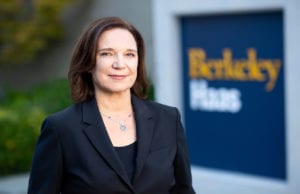
I condemn violence and racism in all forms, and specifically the recent, amplified, consistent violence against Black and African-American people in our country.
Although the history of racism in our society is long and horrific, I recognize that we now have more visibility into specific instances—many of them violent.
To those of you who identify as Black or African American, I do not share your lived experience. However, I empathize with the deep emotional toll it likely takes to constantly think about racist violence against your community and of the safety and security of you and your loved ones. We hear you.
To everyone in our Berkeley Haas community, I ask you to deeply question this status quo. We all have agency in our lives and it is up to us all to consider how to educate ourselves, show solidarity, and take action to eradicate racism from our society and institutions.
—Dean Ann Harrison
Honoring all our grads
Nobel laureate Oliver Williamson, pioneer of organizational economics, dies at 87
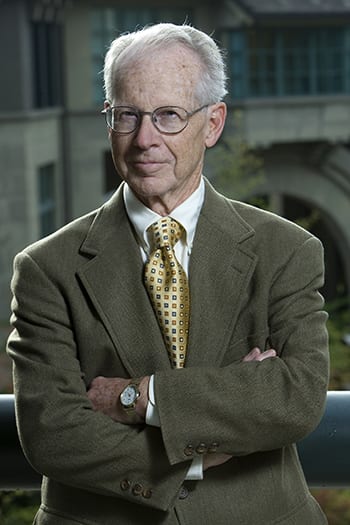
Oliver Williamson, a UC Berkeley and Haas School of Business professor for nearly three decades whose elegant framework for analyzing the structure of organizations won him a Nobel Prize in Economic Sciences, passed away on May 21, 2020 in Oakland, Calif. at the age of 87. His death followed a period of failing health.
“Williamson’s work permanently changed how economists view organizations,” said Prof. Rich Lyons, who was dean of the Haas School when Williamson won the Nobel and is now UC Berkeley’s Chief Innovation and Entrepreneurship Officer. “Yet for all of his intellectual creativity, I most often think of Olly as a person who lifts others. The ripple effects that he has had on his field through his students and colleagues could well be as large as the enormous impact his own work had.”
Williamson, the Edgar F. Kaiser Professor Emeritus of Business at Haas and Professor Emeritus of Economics and Law at UC Berkeley, received the most prestigious prize in economics in 2009 for his insights into what’s known as the “make or buy” decision. This is the process by which businesses choose whether to outsource a process, service, or manufacturing function or to perform the work in-house.
Williamson’s path-breaking contributions to economics were deep and boundary-spanning. They included seminal work that laid the foundation for the now-burgeoning fields of organizational and institutional economics. Traditional economic approaches of the early 1970s did not allow for analysis of governance within organizations. By showing that economics could illuminate the costs and tradeoffs that parties make in transactions, Williamson’s work brought governance and the management of relationships into economic theory.
His multidisciplinary approach to analyzing organizational structures was unconventional in economics at the time—he described it as a melding of soft social science with abstract economic theory. He looked not only at formal firm structure but at culture and social norms. Prof. Ernesto Dal Bó, the Phillips Girgich Professor of Business, called Williamson’s work “a fountain of vocation-shaping epiphanies.”
“After reading his work, we could no longer think of markets, organizations, and legal or political institutions in the same way. And so we didn’t,” Dal Bó said. “His insights are now part of the common sense of social scientists.”
Williamson’s theories gave rise to a new wave of empirical literature that tested his method of analysis in a wide range of industries, and shaped fields as diverse as public policy, law, strategy, and sociology. His “transaction cost” approach has since shed light on thinking about the design of joint ventures, long-term contracts, and bureaucracy more generally. His influence can be seen around the world, from electricity deregulation in California to investment in Eastern Europe to human resource management in the technology industry.
A simple analysis with broad reach
Oliver Eaton Williamson—known as “Olly” to his friends, colleagues, and students—was born in Superior, Wisconsin on September 27, 1932. The son of two teachers, he formed lifelong friendships with his Superior Central High School Class of 1950 classmates, holding four reunions per decade and annual poker weekends. He received his B.S. in management from the Massachusetts Institute of Technology in 1955, an MBA from Stanford University in 1960 and a PhD from Carnegie Mellon University in 1963.
Williamson began his teaching career at Berkeley, where he was an assistant professor of economics in the undergraduate program. In 1965, he moved to the University of Pennsylvania, where he taught and held various leadership roles until he joined the faculty at Yale University in 1983.
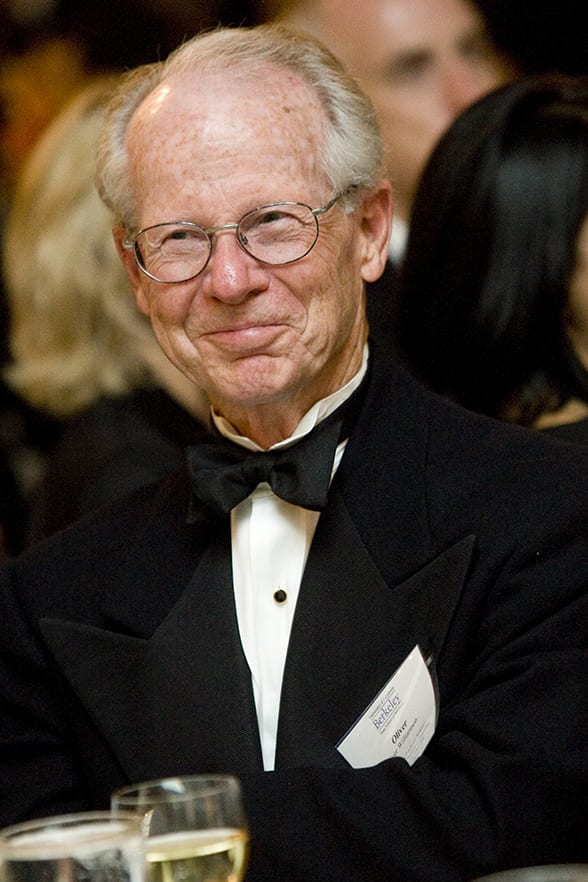 Berkeley Haas Prof. Emeritus Pablo Spiller said that when Williamson recruited him to the economics department at Penn 40 years ago, “I didn’t realize that he was also recruiting me to his view of economics. The latter was done in subtle and not so subtle ways: his penetrating questions at seminars, written comments on papers, remarks in conversations, or over dinner,” he said. “While naturally a shy person, Olly was not shy to help a colleague see the light.”
Berkeley Haas Prof. Emeritus Pablo Spiller said that when Williamson recruited him to the economics department at Penn 40 years ago, “I didn’t realize that he was also recruiting me to his view of economics. The latter was done in subtle and not so subtle ways: his penetrating questions at seminars, written comments on papers, remarks in conversations, or over dinner,” he said. “While naturally a shy person, Olly was not shy to help a colleague see the light.”
In 1988, Berkeley lured Williamson back by appealing to his interdisciplinary interests and offering him appointments in not only business and economics but also the law. While at Berkeley, Williamson created a world-renowned PhD workshop known today as the Williamson Seminar on Institutional Analysis. He retired from teaching in 2004.
Williamson’s work on new ways of analyzing markets and business enterprises evolved from a paper written in 1937 by Ronald Coase, also a Nobel laureate. Building on Coase’s work, Williamson studied economic organization through the lens of transaction costs, exploring how different attributes of transactions were better suited to different types of organizations. It helped explain why some companies grow, creating management structures controlling different areas, while others remain independent.
“I originally thought of ‘make-or-buy’ as a stand-alone problem,” Williamson once said. “But now I think of it as being an exemplar. If you understand make-or-buy, which is a simple case, you can understand more complex cases.” These include joint ventures, labor contracts, antitrust, and industry privatization. Hundreds of economists and policymakers have since applied his framework to situations other than outsourcing, including the boundaries between public and private sector activity.
Path-breaking books
Williamson’s contributions to economics were widely recognized through awards, fellowships, and no fewer than 11 honorary doctorates from universities worldwide. Two of Williamson’s five books, Markets and Hierarchies: Analysis and Antitrust Implications (1975) and The Economic Institutions of Capitalism: Firms, Markets, Relational Contracting (1985) are said to be among the most cited in the social sciences.
The Nobel Prize, which Williamson shared with political scientist Elinor Ostrom of Indiana University, marked the apogee of his career. The award—the second Nobel Prize for a Haas economist—came at the height of the global economic crisis. Many observers speculated that Williamson was selected for his work’s application to the financial meltdown and financial regulation. Those close to Williamson, however, said the honor was long overdue.
Prof. David Teece, the Thomas W. Tusher Professor in Global Business, predicted a Nobel for Williamson when he read a draft manuscript of Markets and Hierarchies as a University of Pennsylvania PhD student in 1974.
“I returned to his office three days later and reported, ‘This is a great book. Why has it taken me four years at Penn to discover a framework that addresses deep questions about the business firm and its organization?’” recalls Teece, noting that before Williamson, the economic frameworks and models to understand the business enterprise were “quite frankly pathetic.”
Teece went on to publish collection of essays in honor of Williamson’s book Markets and Hierarchies, entitled Firms, Markets and Hierarchies: The Transaction Cost Economics Perspective, with Glenn R. Carroll in 1999.
Prof. Steve Tadelis, the Sarin Chair in Leadership and Strategy, said Williamson’s work had heavily influenced him as a graduate student and assistant professor at Stanford. They had met and developed a collegial friendship by the time Tadelis joined Berkeley Haas in 2005, eventually authoring two papers together.
“Olly’s relentless drive for uncovering deep insights has always been an inspiration for me,” Tadelis said. “I will deeply miss his intellectual enthusiasm and friendly disposition, and at the same time I feel a deep gratitude for having him be a friend and mentor.
In recognizing Williamson and his work, the Royal Swedish Academy of Sciences singled out “his analysis of economic governance, especially the boundaries of the firm.”
In an interview upon learning he had won the prize, Williamson said. “All feasible forms of organization are flawed. We need to understand the trade-offs that are going on, the factors that are responsible for using one form of governance rather than another, the strengths and weaknesses that are associated with each of them.”
A passion for Berkeley
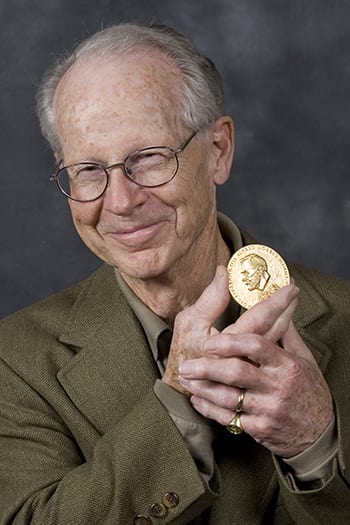 Throughout his life, Williamson displayed an uncommon humility even as his celebrity in economic circles grew. Just hours after his Nobel Prize was announced, Williamson was modest about his selection, calling it “undeserved” during a congratulatory toast with hundreds of Haas faculty, staff, and students.
Throughout his life, Williamson displayed an uncommon humility even as his celebrity in economic circles grew. Just hours after his Nobel Prize was announced, Williamson was modest about his selection, calling it “undeserved” during a congratulatory toast with hundreds of Haas faculty, staff, and students.
“I would describe myself,” he told the packed room, “as a conscientious teacher who had a lot of students who were tolerant and went on to do good work.”
Williamson was also passionate about Berkeley, calling it a “glorious place” whose commitment to excellence generates “extraordinary energy.” He donated a large portion of his Nobel Prize to Berkeley Haas to create a new endowed faculty chair in the economics of organization. (The Oliver E. and Dolores W. Williamson Chair of the Economics of Organizations is now held by Prof. John Morgan.)
The Haas School also established its highest faculty honor, the Williamson Award, in his name. Williamson was known for embodying the school’s Defining Leadership Principles—Question the Status Quo, Confidence Without Attitude, Students Always and Beyond Yourself.
“I can still hear a piece of advice he gave me when I first became dean that served me on many occasions: ‘When in doubt, decide on the merits,’ Lyons said. “With his own doctoral students, if they expressed doubt in themselves when taking the next step, he would tell them ‘I wouldn’t have suggested you try to do this if I didn’t have confidence that you could.’”
Williamson is survived by his five children and five grandchildren: son Scott (Susanna Krentz), daughter Tamara (Don Mohr), daughter Karen (Robert Indergand), son Oliver Jr. (Anna Suszanowicz), and son Dean (Mihoko Matsue); and grandchildren Kimberly and Kristin Indergand, Claire and Peter Williamson, and Erin Mohr. He was equally proud of his niece, Katherine Frisbie, and nephew, Steven Frisbie (Jennifer). He was predeceased by his wife of 55 years, Dolores Celini Williamson, in 2012.
A family memorial service will be held at a later time. Those wishing to remember Williamson may do so by making a donation to the Northern California and Northern Nevada Alzheimer’s Association.
Downloadable photos of Oliver Williamson are available here: https://haas.canto.com/v/oliverwilliamson
The Society for Institutional and Organizational Economics, which Williamson co-founded, will be posting a series of short essays honoring his contributions and life: https://www.sioe.org/news/passing-oliver-williamson.